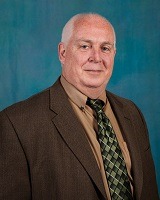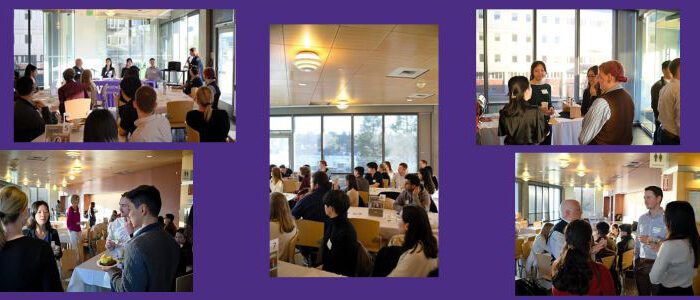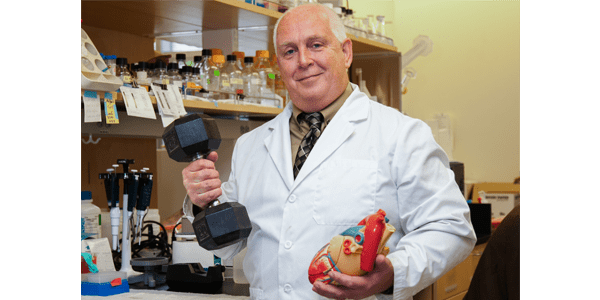Dr. James B. Bassingthwaighte Endowed Faculty Fellow in Bioengineering
Professor of Bioengineering
Associate Chair of Research and Translation
mregnier@uw.edu
Phone: (206) 616-4325
Office: Foege N310F
South Lake Union
Phone: (206) 221-0504
Office: South Research Building, S184
Michael Regnier
Myofilament targeted gene therapy
Stem cell derived cardiomyocytes
Multi-scale modeling of muscle
M.S., Exercise Science, Portland State University, 1983
B.A., History, B.A. Political Science, C.S., Central European Politics, Portland State University, 1980
1991-1992 Postdoctoral Research Fellowship, Department of Anesthesiology Research, Mayo Clinic, Rochester, Mn
2013 – current Washington Research Foundation Endowed Professor of Bioengineering
2008 University of Washington Distinguished Faculty Mentor Award – Nominee
2005 University of Washington Student Mentor Award, SURP
2001-2004 American Heart Association – Established Investigator Award
BIOEN 531: Proposal Writing
BiOEN 498/599: Cardiac Bioengineering
Lundy SD, Murphy SA, Dupras SK, Dai J, Murry CE, Laflamme MA, Regnier M. Cell-based delivery of dATP via gap junctions enhances cardiac contractility. J Mol Cell Cardiol. 2014 Jul;72:350-359. PMCID: PMC4073675.
Yang X, Rodriguez M, Pabon L, Fischer KA, Reinecke H, Regnier M, Sniadecki NJ, Ruohola-Baker H, Murry CE. Tri-iodo-l-thyronine promotes the maturation of human cardiomyocytes-derived from induced pluripotent stem cells. J Mol Cell Cardiol. 2014 Jul;72:296-304. PMCID: PMC4041732.
Feest ER, Steven Korte F, Tu AY, Dai J, Razumova MV, Murry CE, Regnier M. Thin filament incorporation of an engineered cardiac troponin C variant (L48Q) enhances contractility in intact cardiomyocytes from healthy and infarcted hearts. J Mol Cell Cardiol. 2014 Jul;72:219-227. PMCID: PMC4082830.
Macadangdang J, Lee HJ, Carson D, Jiao A, Fugate J, Pabon L, Regnier M, Murry C, Kim DH. Capillary force lithography for cardiac tissue engineering. J Vis Exp. 2014 Jun 10. PMID: 24962161.
Thomson KS, Dupras SK, Murry CE, Scatena M, Regnier M. Proangiogenic microtemplated fibrin scaffolds containing aprotinin promote improved wound healing responses. Angiogenesis. 2014 Jan;17(1):195-205. PMCID: PMC3888647.
Rodriguez AG, Rodriguez ML, Han SJ, Sniadecki NJ, Regnier M. Enhanced contractility with 2-deoxy-ATP and EMD 57033 is correlated with reduced myofibril structure and twitch power in neonatal cardiomyocytes. Integr Biol (Camb). 2013 Nov;5(11):1366-1373. PMID: 24056444.
Williams CD, Salcedo MK, Irving TC, Regnier M, Daniel TL. The length-tension curve in muscle depends on lattice spacing. Proc Biol Sci. 2013 Sep 7;280(1766):20130697. PMCID: PMC3730583.
Lundy, S. D., M. Regnier and M. A. Laflamme. (2013). Contractile and structural maturation of human embryonic stem cell-derived cardiomyocytes. Stem Cell Devel. PMID: 23461462
Nowakowski, S. G., S. C. Kolwicz, F. S. Korte, Z. Luo, J. N. Robinson-Hamm, F. V. Brozovich, R. S. Weiss, R. Tian, C. E. Murry and M. Regnier. (2013). Transgenic overexpression of Ribonucleotide Reductase improves cardiac performance. PNAS 110: 6187-6192. www.pnas.org/cgi/doi/10.1073/pnas.1220693110, PMID: 23530224.
Wang, D., M. E. McCully, Z. Luo, J. McMichael, A. Y. Tu, V. Daggett and M. Regnier. (2013). Structural and Functional Consequences of Cardiac Troponin C L57Q and I61Q Ca2+-Desensitizing Variants. Arch. Biochem. Biophys. 535: 68-75. DOI:10.1016/j.abb.2013.02.006 PMID:23454346
Thomson, K. S., F. S. Korte, C. M. Giachelli, B. D. Ratner, M. Regnier and M. Scatena. (2013). Pre-vascularized micro-templated fibrin scaffolds for cardiac tissue engineering applications. Tissue Eng. Part A. 19:967-977.
Beck, A. E., M. J. McMillin, H. I. S. Gilersleeve, P. R. Kezele, K. M. Bofferding, J. C. Carey, M. Regnier and M. J. Bamshad. (2013). Spectrum of mutations that cause distal arthrogryposis types 1 and 2B. American Journal of Medical Genetics (Part A). 161:550-555.
Rao, V. S., F. S. Korte, M. V. Razumova, E. R. Feest, H. Man Hsu, T. Irving, M. Regnier & D. A. Martyn. (2013). Phosphorylation of cardiac troponin I or myosin binding protein C/titin independently reduces calcium-sensitivity and length-dependent activation in cardiac muscle. J. Physiol. 591:475-490, PMID:23129792
Williams, C. D., M. Regnier and T. L. Daniel. (2012). Elastic energy storage and radial forces in the myofilament lattice depend on sarcomere length. PLoS Comp. Biol. 8(11): e1002770. doi:10.1371/journal.pcbi.1002770
Korte, F. S., E. R. Feest, M. V. Razumova, A. Tu and M. Regnier. (2012). A cardiac troponin C variant (L48Q) with enhanced Ca2+ binding reduces sarcomere length-dependent contractile activation independent of strong crossbridges. AJP Heart & Circulatory Physiology. 303:H863-H870.
Wang, D., I. M. Robertson, M. X. Li, M. E. McCully, M. L. Crane, Z. Luo, A. Y. Tu, V. Daggett, B. D. Sykes and M. Regnier. (2012). Structural and Functional Consequences of the Cardiac Troponin C L48Q Ca2+-sensitizing Mutation. Biochem, 51:4473-4487.
Tanner, B. C. W., T. L. Daniel and M. Regnier. (2012). Coupling between Neighboring Regulatory Units Coordinates Activation of Thin Filaments and Enhances Cooperative Myosin Binding in Skeletal Muscle. PLoS Comp. Biol. 8:1-13. e1002506.
Liu, Y., F. S. Korte, F. Moussavi-Harami, M. Yu., M. Razumova, M. Regnier and M. T. Chin. (2012). Transcription factor CHF1/Hey2 regulates EC-coupling and heart failure in mice through regulation of KFBP12.6. AJP-Heart and Circulatory Physiology. 302:H1860-1870. doi:10.1152/ajpheart.00702.2011
Korte, F. S., J. Dai, K. Buckley, E. R. Feest, N. Adamek, M. A. Geeves, C. E. Murry and M.Regnier. (2011). Upregulation of cardiac ribonucleotide reductase increases intracellular 2 deoxy-ATP, contractility and relaxation. JMCC. 51:894-901. DOI:10.1016/j.yjmcc.2011.08.026, PMC 3208740.
Rodriguez, A., S. Han, M. Regnier and N. Sniadecki. (2011). Substrate stiffness increases twitch power of neonatal cardiomyocytes through changes in myofibril structure and intracellular calcium. Biophys. J. 101:2455-2464.
Tulloch, N. L., V. Muskheli, M. Razumova, F. S. Korte, M. Regnier, L. Pabon, H. Reinecke and C. E. Murry. (2011). Growth and maturation of engineered human myocardium with mechanical loading and vascularization. Circ. Res. 109:47-59.
Kreutziger, K. L., N. Piroddi, C. Tesi, C. Poggesi and M. Regnier. (2011). Cooperative activation and tension kinetics in cardiac muscle are strongly modulated by calcium binding kinetics of troponin C. JMCC. 50:165-174.
In the News
Bioengineers Connect: An evening of networking and inspiration
2024-05-01T06:46:00-07:00May 1st, 2024|
Unveiling solutions: The vital role of UW Center for Translational Muscle Research in addressing skeletal muscle dysfunction
2024-04-15T05:47:15-07:00April 15th, 2024|
Michael Regnier: From champion weightlighter to research heavyweight
2020-10-26T08:28:53-07:00November 21st, 2017|
UW BioE forms group to explore global health research opportunities
2020-10-26T08:29:18-07:00June 1st, 2017|
Bioengineers with UW’s ISCRM lead educational outreach event at Mill Creek Middle School
2020-10-26T08:29:27-07:00January 18th, 2017|
Charles Murry, Michael Regnier, Ruikang Wang and Tueng Shen inducted as 2016 AIMBE Fellows
2020-10-26T08:29:59-07:00April 21st, 2016|









